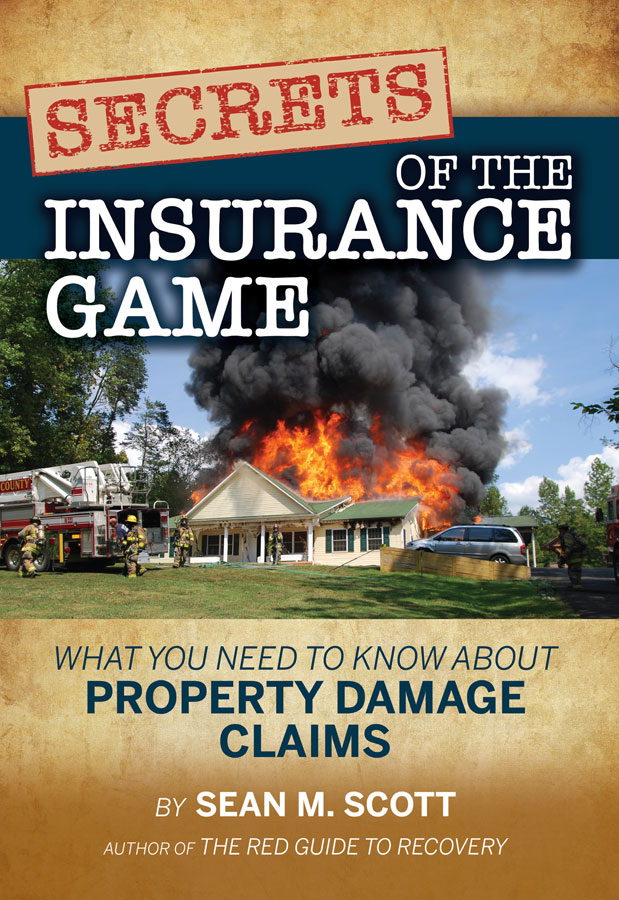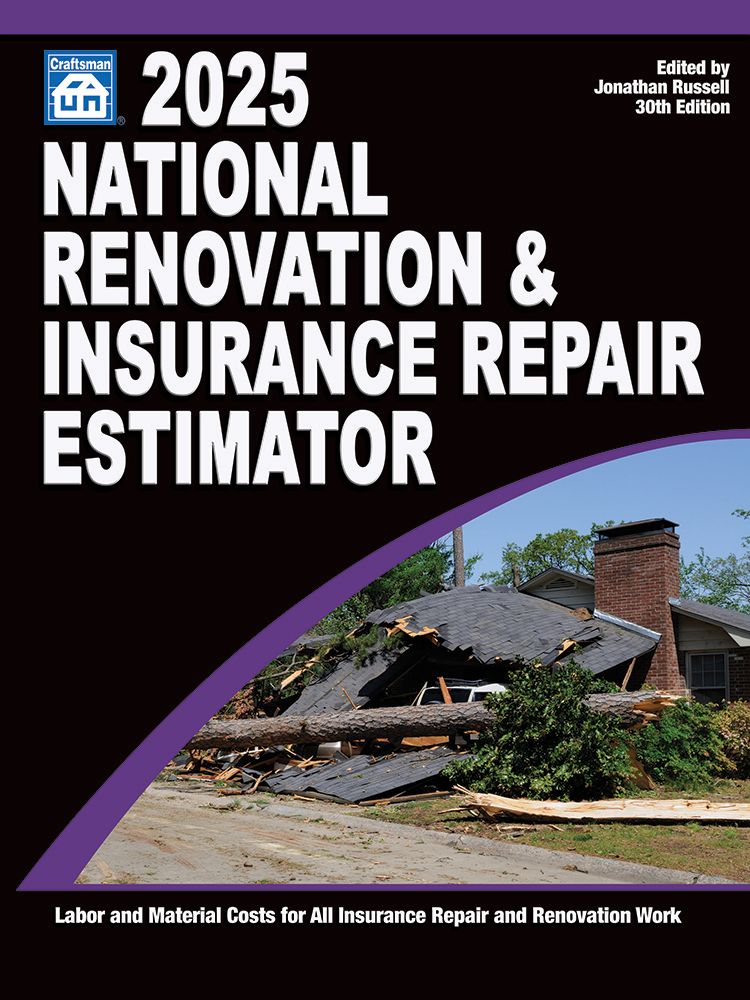Managing Risks in Contracts








Restoration contractors assume a lot of risks in their contracts and most firms do not know how to manage them. We review hundreds of insurance requests in contracts every year from our restoration contracting clients and from the customers they work for. From that work we know there is a 75% fundamental defect rate on the insurance policies sold to restoration contractors when it comes to insuring risks assumed in contracts. Some insurance coverage defects are a lot more significant than others. The following are some tips that may help you.
Restoration firms have to manage risks in contracts from two perspectives: First, your clients will often expect you to indemnify them (pay them) for damages you may cause on a job and hold them harmless (they are not responsible to help you pay for the damages even if they helped you cause the damages). Second, when you hire subcontractors, you, as the general contractor, should expect your subcontractors to indemnify and hold you harmless for the damages that the subcontractor may cause.
In many ways the indemnity and insurance issues related to these two perspectives mirror each other. Everything your clients want from you is likely something you should be getting from your subcontractors in your contracts with them.
When your clients ask to be indemnified by you, they almost always require that you carry liability insurance to back up your contractual obligations. Evidence of insurance can be a copy of your insurance policies, but this evidence is more commonly supplied to your clients in the form of a Certificate of Insurance issued by your insurance agent.
Without insurance to back you up, your client would be dependent upon your good nature and assets to fulfill your contractual indemnity obligations to them. Nobody you work for wants you to step up to the plate in place of a real insurance company no matter how good natured you might be.
One trap we see restoration firms routinely fall into is when the insurance coverage on the firm is not as broad as the contractual indemnity obligations the firm has with their clients. Well-crafted insurance specifications are designed to make it hard for you to provide insurance to your customer that has fundamental coverage flaws within the insurance that needs to cover both of you. As a general rule of thumb, the more complex the insurance requirements are in a contact, the more important it is for you to meet them. Those insurance requirements could be reflecting contractual obligations that your customers may have in their contracts with their customers. Both sets of customers may expect you to indemnify and hold them harmless for losses you may cause in your operations.
It is important to note that it is very rare to see a contract where the contractors’ indemnity obligation is limited to the insurance purchased. If there is a hole in your insurance coverage, you will still be forced under the contract to indemnify your customer. The insurance specifications are usually designed to make sure that never happens.
Insurance specifications can be complex. It is important that before you sign contracts and perform work that you send the contract to your insurance agent to review. Your agent will check to see if you have all of the coverages detailed in the insurance requirements of the contract. Remember, if you perform a job and do not have the required insurances in the contract, your customer does not have to pay you. Some insurance agents are a lot better than others in understanding the terms in insurance requirements. The high defect rates in a restoration contractor’s insurance program are created at the insurance agent level. The first step in finding good insurance is to find a good insurance agent. And the best insurance agents do not necessarily sell the cheapest insurance policies.
Here are some of the most common contractual liability insurance provisions in contracts:
- Your customer wants to be an additional insured on your insurance policies. This is usually done quite easily under the Blanket Additional Insured Endorsement, which is routinely added to a contractor’s liability insurance policies. Under the terms of this endorsement, any customer you have a written contract with can be an additional insured under your policy if you agree to it in the contract. As an additional insured, your insurance steps in to defend your customer or your customer’s customer (if you have a written contract with them) in case they suffer a loss from something you did. The most common places the additional insured status gets messed up are:
- The written contract did not quite get done before you started work.
- The customer was an additional insured until you finished the job but not after.
- You customer does not meet the definition of who could be an additional insured in the policy.
- Your insurance needs to be primary. That means your insurance must pay first before the insurance carried by your customer to ensure their operations has to pay anything.
- Your insurance needs to be noncontributory. That means if you have insurance and your customer has insurance, then your insurance pays up to its limits of liability before your customer’s insurance pays anything. This follows that whole-hold harmless idea in your contract with the customer.
- Certificates of Insurance: When an insurance agent provides a Certificate of Insurance (COI) to your customer where the insurance evidenced in the certificate does not exist within the insurance policy, the agent can be sued for professional errors and omissions for an uninsured loss that appeared to be covered under the policies described in the certificate of insurance. Abuses with COIs became so bad that 22 states in the past two years have made it a crime to misrepresent coverage in a COI. Smart insurance agents know about their professional liability loss exposures arising from issuing misleading certificates. Insurance agents therefore are becoming increasingly reluctant to amend certificates of insurance to reflect non-standard coverages. In the restoration business there can be multiple levels of indemnities in contracts and the use of non-standardized insurance coverage. That complexity, combined with professional liability on the part of the agent, can make certificates of insurance a major challenge for restoration firms. The best way to avoid problems in this area is to team up with specialist insurance agencies that have researched the needed insurances to comply with the most common insurance and certificate requests in the restoration business.
There is a reason your customers want to transfer any losses you create - that they become involved with - onto your insurance. It’s because if you pay, they do not have to. You need to follow the same strategy of contractual risk shifting with your subcontractors.
You need a contract with your subcontractor’s that indemnifies you and holds you harmless for their actions even if you were a participant in those actions. Then you want those subs as evidence in a Certificate of Insurance that they have you on their policy as an additional insured and that their liability insurance is primary and noncontributory to your insurance.
You will have the same issues with the contractual indemnities of subcontractors working for you that your customers have with you. Plus you have some challenges that your customers likely do not have to deal with. Here are a few of the more important differences:
Restoration firms should have a Contractors Pollution Liability (CPL) insurance policy to cover losses arising from or related to Category 3 water, bacteria, lead, asbestos, mold and other irritants or contaminates at a jobsite. Chances are your customers and subcontractors do not have pollution insurance in any form. Many of your customers do not know enough about CPL insurance to even ask for it. This means that if there is a loss related to pollution/fungus /mold/bacteria and you have CPL coverage, you are likely to have the only primary and noncontributory insurance around the loss. For this reason, it is very important for your CPL insurance to have good coverage for the work performed on your behalf by subcontractors. Remember, just because your customer does not ask you for CPL insurance doesn’t affect your duty to indemnify them under your contract.
Beware of the $1-million Deductible
This is a common but easily avoidable glitch in the liability insurance policies purchased by many restoration firms. Insurance policies with this “feature” cover you for the work performed by subcontractors, but only if:
- You have a signed contract with the subcontractor before the work is started, which might not happen at 3 a.m., in a blizzard, when the high school gymnasium is being flooded by a frozen pipe.
- Your subcontractor has collectable liability insurance with a $1,000,000 limit.
- You are an additional insured under that policy.
If steps 1-3 are not accomplished and there is a claim on a job which was caused by a subcontractor, under the terms of this insurance policy you would have coverage for the claim - but your deductible would be the amount of insurance the subcontractor should have had on the job: $1 million. Of course nowhere in the policy do they call this provision a $1-million deductible option and most firms that have the policy have no idea that the provision is buried in the 80-plus page policy. It does make a good illustration of the complexity contractual liability poses for a restoration firm. In your contracts with your customers is there a corresponding carve out from your indemnity obligations in the event your insurance is uncollectable and/or in the event your subcontractors insurance is uncollectable? Probably not - I have never seen one.
Contractual Liability in the Real World
A restoration firm with good quality liability insurance hires a plumber who cuts an access hole into ceiling materials containing asbestos to reach some plumbing fixtures. It was a 12-inch hole. The drying fans that were already there for a drying job blew the asbestos fibers around the home. The homeowner became suspect about the dust for some reason and hired an industrial hygienist to check the home out. The hygienist found asbestos fibers in baby clothing and in other places around the home. The cautious homeowner unilaterally decided the best way to remediate the asbestos in the home was to bulldoze the home to the ground.
The cost of the home, plus attorney fees, to the homeowner’s insurance company that was originally paying for a water loss was more than $972,000.
Who pays for what? The job was performed under a master services agreement with a multi-billion dollar insurance company who insured the home under a homeowner’s insurance policy. That insurance company was indemnified by the firm that held the master service agreement to handle remediation services for the insurance company. The restoration contractor had agreed to indemnify the firm holding the master service agreement.
Who pays for what under the terms of the contracts that were in place at the time of the loss? The loss was caused by asbestos so the general liability insurance of all of the stakeholders would not cover any part of the loss. The plumber, like most plumbers, did not have CPL insurance so all of this loss went to the restoration firm’s CPL policy, which did not have a $1-million uninsured subcontractor deductible endorsement on it. The restoration firm’s CPL insurance company is likely to sue the plumber for the $972,000, plus the insurance company’s attorney fees in collecting the $972,000. The uninsured plumber could sue their insurance agent for not having a CPL policy in place if they do not go bankrupt first, which is actually the more likely scenario. Without that CPL policy, which was required of the restoration contractor by the firm holding the master service agreement, the restoration firm would be in the same boat as the plumber. How did the restoration firm come out on this deal? They had to pay the deductible on the CPL policy and their customer did not pay them for the restoration work. The restoration firm was out about $30,000 at the end of the day.
In conclusion, contractual liability is a double-edged sword. Be sure to use it to your advantage wherever possible. A sample insurance specification for you to use with your subcontractors can be obtained at www.restorationinsurance.com. Before you own insurance, find a competent insurance agent that knows a lot about a contractor’s insurance needs. If you have been buying your insurance from the low bidder insurance agent for a few years, it is very likely you are in trouble on contractual liability. Once you know the game on contractual liability in insurance policies, it is a pretty easy game to play.
Looking for a reprint of this article?
From high-res PDFs to custom plaques, order your copy today!












